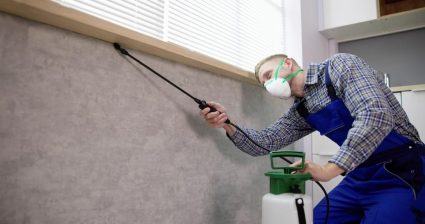
Baking soda, scientifically known as sodium bicarbonate, is a common household product with a plethora of uses. One of its lesser-known functions is its ability to kill certain types of fungus. In this article, we delve into the properties of baking soda, how it interacts with fungi, and its effectiveness as a fungicide.
Yes, baking soda can kill certain types of fungus. It creates an alkaline environment that disrupts the fungal cell walls, leading to their death. However, its effectiveness varies depending on the type of fungus and the conditions in which it is used. It is best used as a preventative measure and in combination with other ingredients like oil and soap.
What is Baking Soda?
Baking soda is a chemical compound with the formula NaHCO3, primarily used as a leavening agent in baking. It comprises sodium, carbon dioxide, and water. When it interacts with acidic ingredients, such as buttermilk, yogurt, or vinegar, it produces carbon dioxide gas, causing the dough or batter to rise.
Baking Soda and Fungi: The Science
Baking soda exhibits antifungal properties by creating an alkaline environment, which reduces fungi’s preference for acidic conditions by raising pH levels. This alkaline environment damages the cell walls of the fungus, causing them to burst and die. When sprayed on plants, baking soda disrupts the ion balance of fungal cells, leading to their collapse. It also leaves alkaline residues on the surface of plants, preventing the formation of spores that cause diseases.
Baking Soda’s Fungicidal Effectiveness
Baking soda’s effectiveness as a fungicide varies depending on the type of fungus. Studies have shown baking soda to have antifungal activity against fungal strains causing superficial skin and nail infections. It has also been found to be effective against certain types of black spot and powdery mildew on plants.
However, the effectiveness of baking soda as a fungicide depends on the dose and the specific fungus being targeted. It may not be effective against all types of fungi, and its effectiveness can be influenced by factors such as the concentration used and the specific conditions of the environment.
How to Use Baking Soda as a Fungicide
To use baking soda as a fungicide, mix 1 teaspoon of baking soda in 1 quart of water. Add a few drops of mild dish soap or insecticidal soap to the mixture. Pour the solution into a spray bottle and spray the affected plants thoroughly, ensuring both the upper and lower leaves are covered. Repeat the application as necessary. Note that baking soda works best as a preventative measure.
Potential Risks and Side Effects
Despite its potential benefits, using baking soda as a fungicide does come with its risks. These include foliar burn, sodium toxicity, foliage scorching, ineffectiveness, and soil accumulation. Constant use of baking soda spray on plants can lead to bicarbonate accumulation in the soil, impacting the nutrients in the soil and potentially harming plant growth.
Comparison to Other Fungicides
Compared to other common fungicides, baking soda has some limitations. For example, potassium bicarbonate is a contact fungicide that kills mildew spores quickly and is approved for organic growing. It is also more effective than sodium bicarbonate. Other common fungicides used in gardening include chlorothalonil, mancozeb, copper-based fungicides, sulfur-based fungicides, captan, tebuconazole, and neem oil.
Conclusion
While baking soda has antifungal properties and can be effective against some types of fungi, its effectiveness varies depending on the fungus and the conditions in which it is used. It is essential to use baking soda in combination with other ingredients like oil and soap for better results and apply it as a preventative measure or early in the infection stage.
Remember to always follow the instructions and precautions when using any fungicide to ensure it is used in the safest and most effective manner possible. And as always, if you have any doubts or concerns, consult with a professional.
Frequently Asked Questions
Can I use baking soda to treat skin fungus?
Yes, baking soda can be used to treat certain types of skin fungus. However, it’s best to use it under the guidance of a healthcare professional as overuse or misuse can lead to skin irritation.
How often should I apply the baking soda solution on plants?
The frequency of application can depend on the severity of the fungal infection. However, it’s generally recommended to spray the baking soda solution once a week as a preventative measure.
What type of soap should I use in the baking soda fungicide mixture?
A mild, non-detergent soap or insecticidal soap is recommended for use in the baking soda fungicide mixture. This helps the solution adhere to the plant surfaces and increases its effectiveness.
Can I use baking soda to treat all types of plant fungus?
No, baking soda is not effective against all types of plant fungus. It has been found to be most effective against black spot and powdery mildew. For other types of fungus, you may need to use other types of fungicides.
Can I use baking soda as a fungicide on indoor plants?
Yes, baking soda can be used as a fungicide on both indoor and outdoor plants. However, ensure the plants are not overwatered as this can create conditions that favor the growth of fungus.












